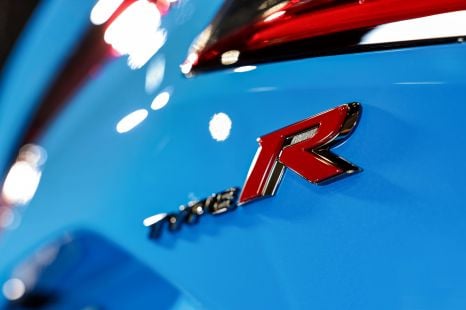

Damion Smy
Honda Prelude Type R ruled out... for now
2 Hours Ago
Kia's all-new Sportage GT-Line takes on the facelifted Subaru Forester 2.5i-S in this top-spec medium SUV shoot-out. Who will take the gong?

Marketplace Editor
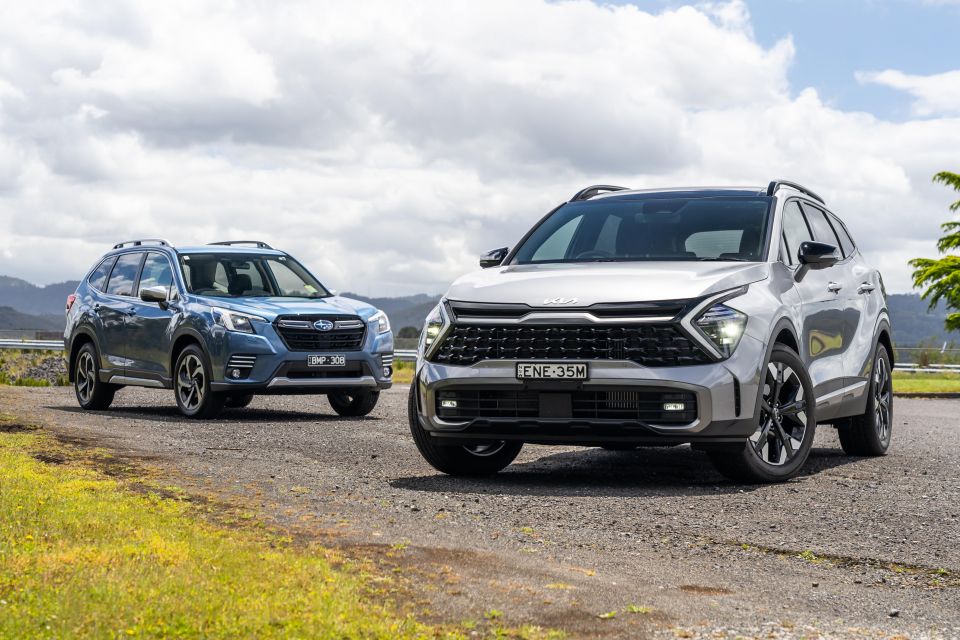

Marketplace Editor
The medium SUV segment is second in volume only to utes in Australia, but is arguably more important for more manufacturers given its increasing popularity across the globe.
Down Under there are some 20 entrants in the mainstream segment and a further 16 in the premium bracket. The two cars you see here – the 2022 Kia Sportage and 2022 Subaru Forester – are two of the more popular choices in the former set.
Shown here in top-spec and petrol AWD flavours, both have recently undergone updates to varying degrees. The Kia is all-new on a platform derived from the larger Sorento, while the Forester’s developments are more minor and limited to aesthetic and technology changes for the most part.
Both cars here are also two of the longer running nameplates in the segment, having both landed in the Australian market during the ’90s.
So, does the newer, bigger, tech-laden Sportage trump Subaru’s old faithful? Or, does the Japanese brand’s more traditional approach to mid-size SUV motoring take the cake? Time to find out.
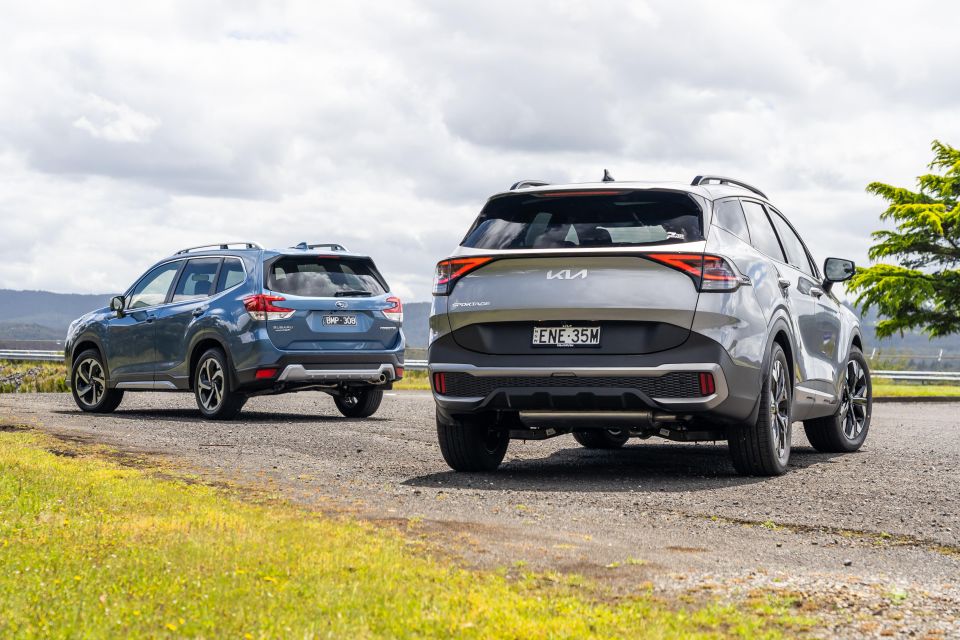
On test we have the flagship petrol versions from each model tree – the 2022 Kia Sportage GT-Line 1.6T AWD and the 2022 Subaru Forester 2.5i-S.
Pricing starts at $51,990 drive-away for the Kia you see here, while the tested Forester variant is $44,190 plus on-road costs, or just over $49,000 drive-away using a Sydney postcode (2000).
Our Sportage tester’s Steel Grey (silver) metallic paint commands a $520 premium, while Subaru doesn’t charge extra for any paint colour – making this Horizon Blue pearl a no-cost option.
The turbo petrol Kia sits below the diesel GT-Line which asks for a few grand more, while the Forester also offers a Hybrid S variant which, while petrol powered, features electric assistance to save fuel.
So, around $2500-3000 between these two vehicles as-tested, though as we’ll get to in the following sections the Kia does pack a lot of kit in to justify its higher sticker price.
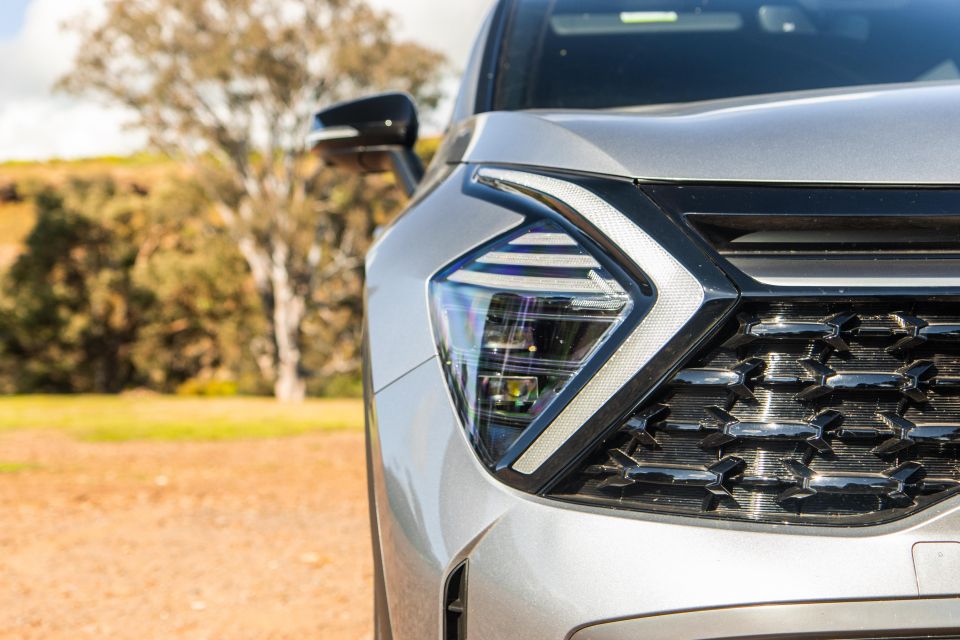
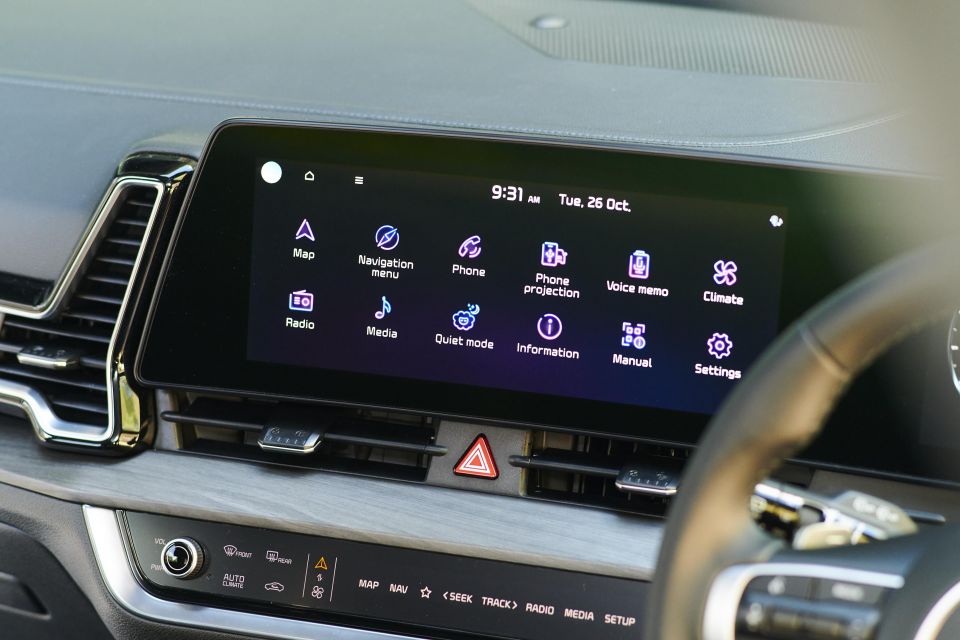
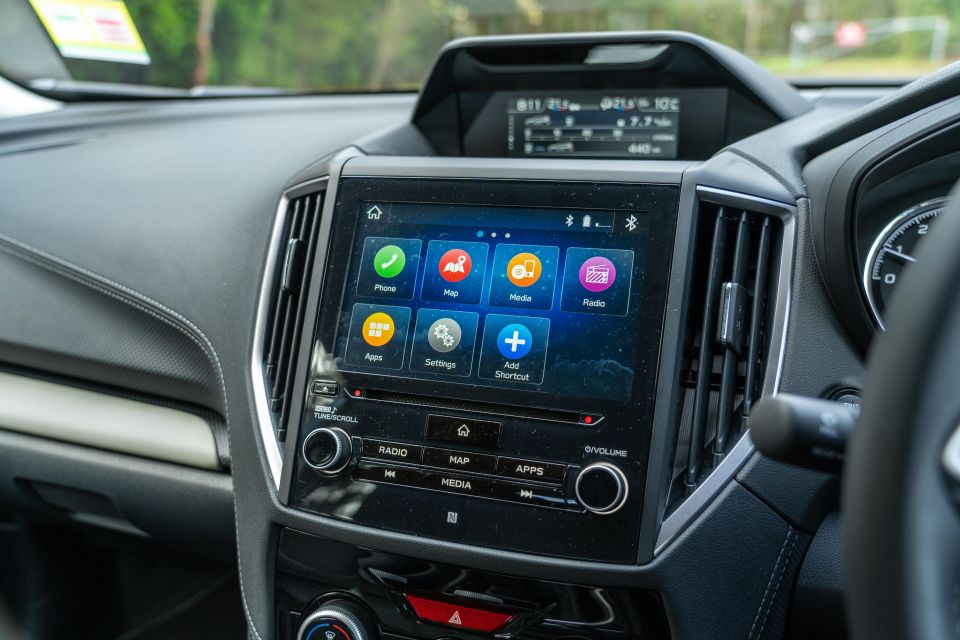
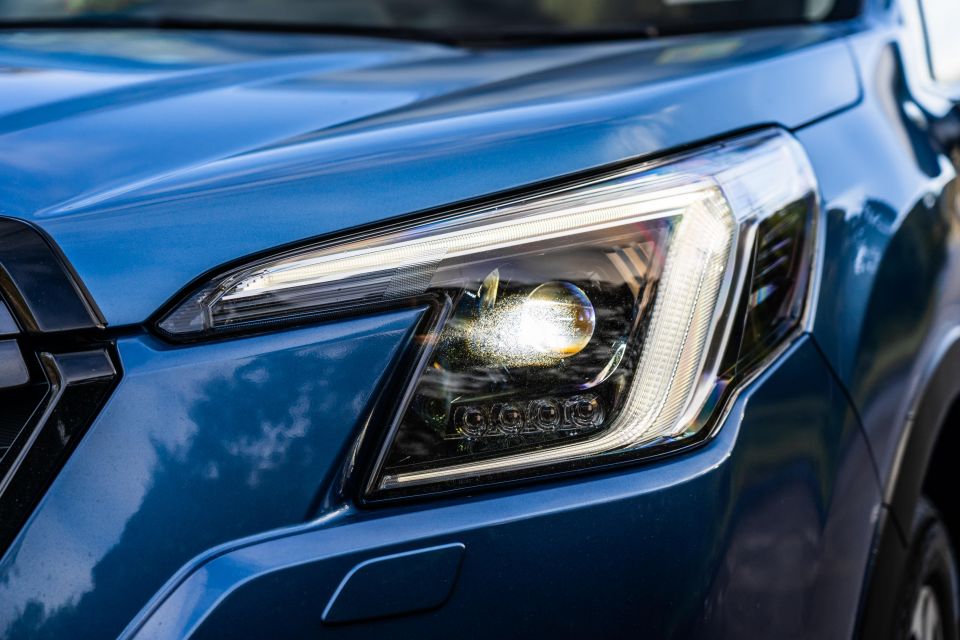
Both SUVs get a fairly strong equipment list, with common features including alloy wheels, touchscreen infotainment displays, Apple CarPlay and Android Auto, satellite navigation, power sunroofs, surround camera views, LED headlights and fog lights, leather seat trim, and an electric tailgate.
Other highlights offered by both entrants include powered front seats with driver memory, ISOFIX and top-tether child seat points in the rear, all-wheel drive, and a comprehensive suite of active safety systems.
The Sportage starts to really run ahead once you take a closer look though.
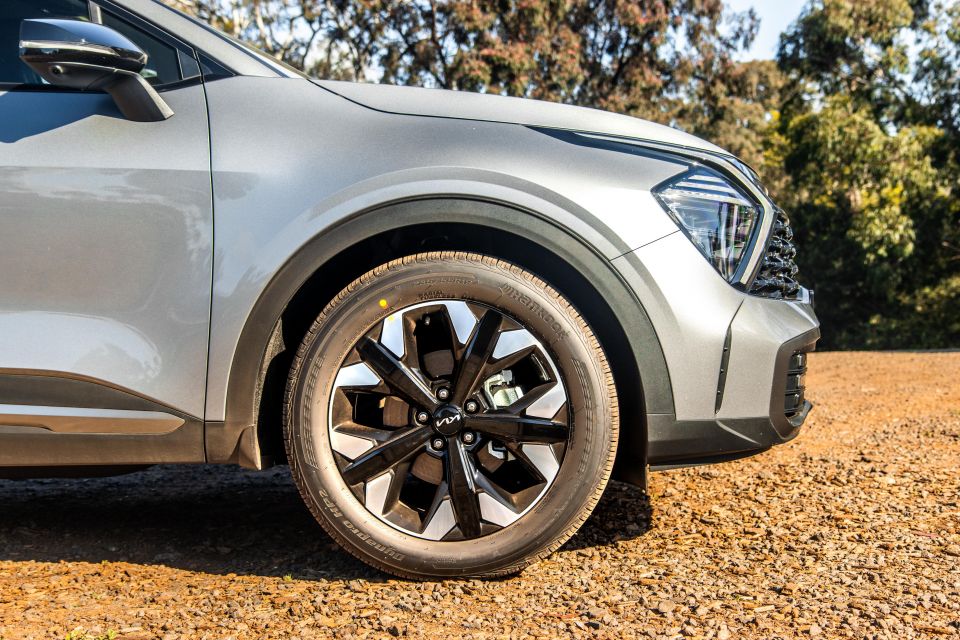
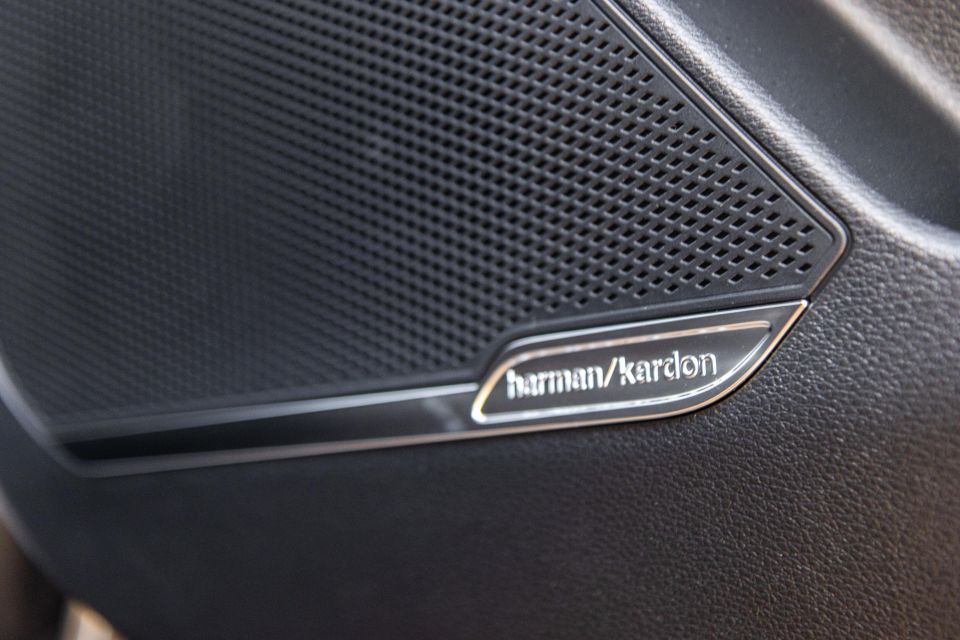
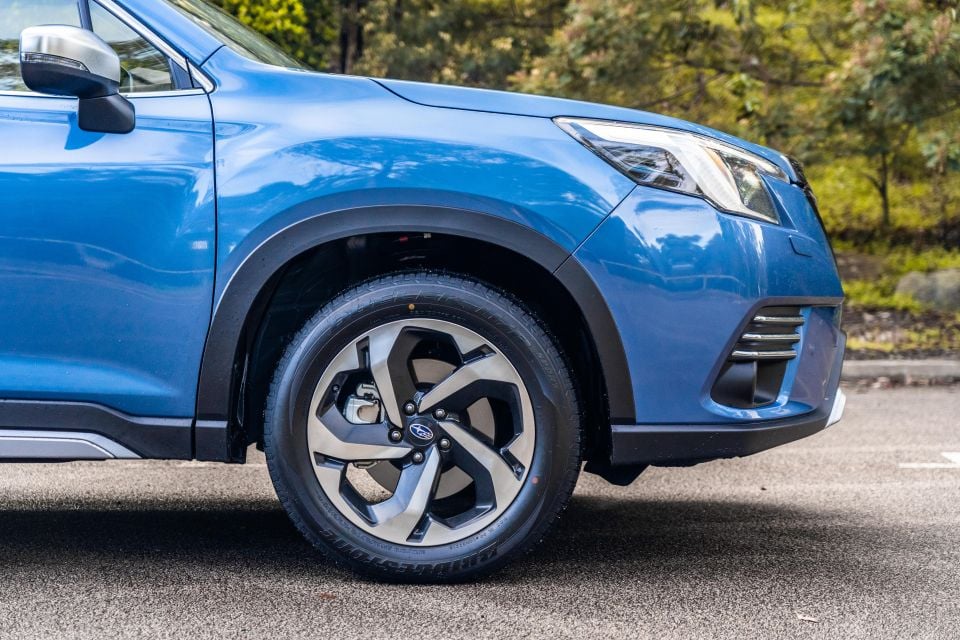
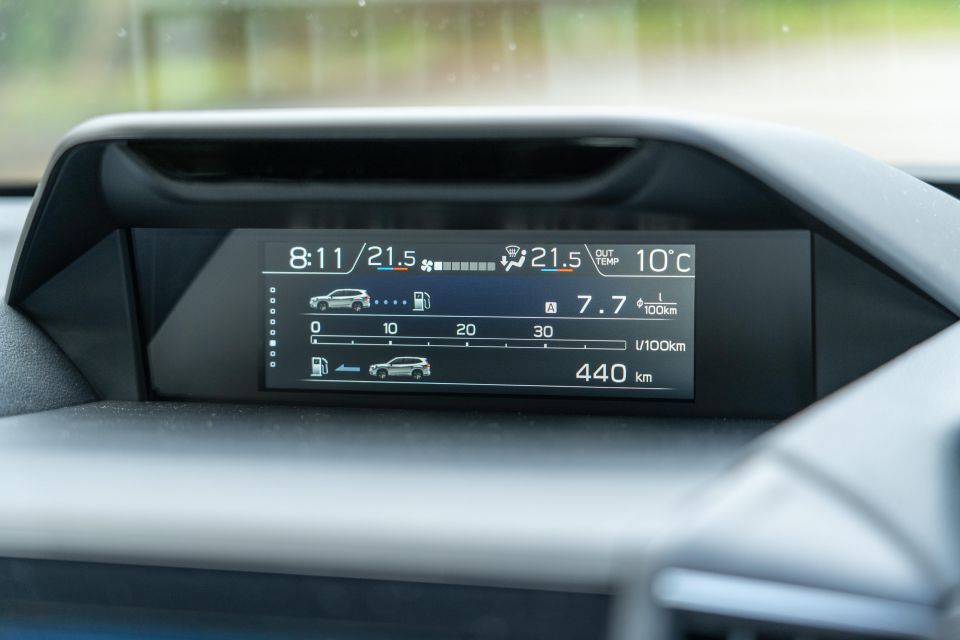
Unique to the Kia are larger 19-inch alloys (versus 18-inch), a 12.3-inch digital instrument cluster, a larger 12.3-inch central touchscreen (versus 8.0-inch), Blind Spot View Monitor cameras that show you a live video feed of the side of your vehicle when you indicate, ventilated front seats, a 3D view for the surround cameras, and a larger panoramic sunroof with power sunshade.
The Forester, meanwhile, gets a 6.3-inch multifunction display atop the dash with supplements the central touchscreen and 4.2-inch driver’s supervision display, fuel-saving idle stop/start tech, and that’s about it.
In terms of what you get for your money, the Kia is the clear winner here.
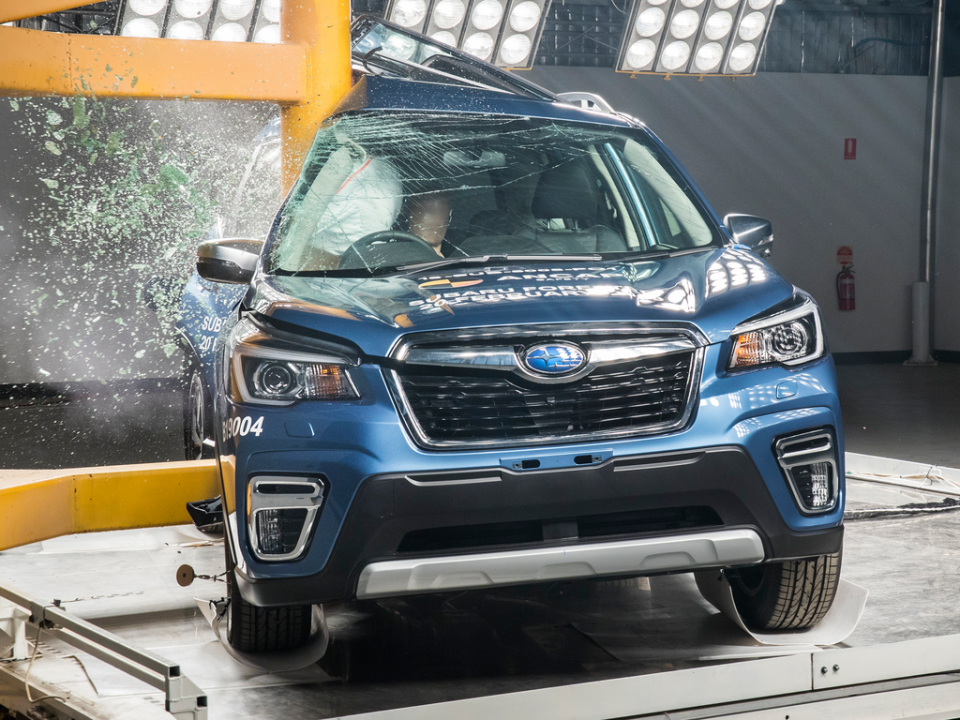
The Forester wears a 2019-stamped five-star ANCAP safety rating, while the latest Sportage is currently unrated. However, given the new Hyundai Tucson received five stars, and is basically the same vehicle underneath, we’d be surprised the the Kia got anything less.
Subaru’s mid-size crossover achieved 94 per cent for adult occupant protection, 86 per cent for child occupant protection, 80 per cent for vulnerable road user protection, and 78 per cent for safety assist.
All 2022 Subaru Forester models come standard with:
All bar the base 2.5i come standard with a facial recognition camera to detect driver drowsiness or distraction, as well as autonomous emergency braking in reverse.
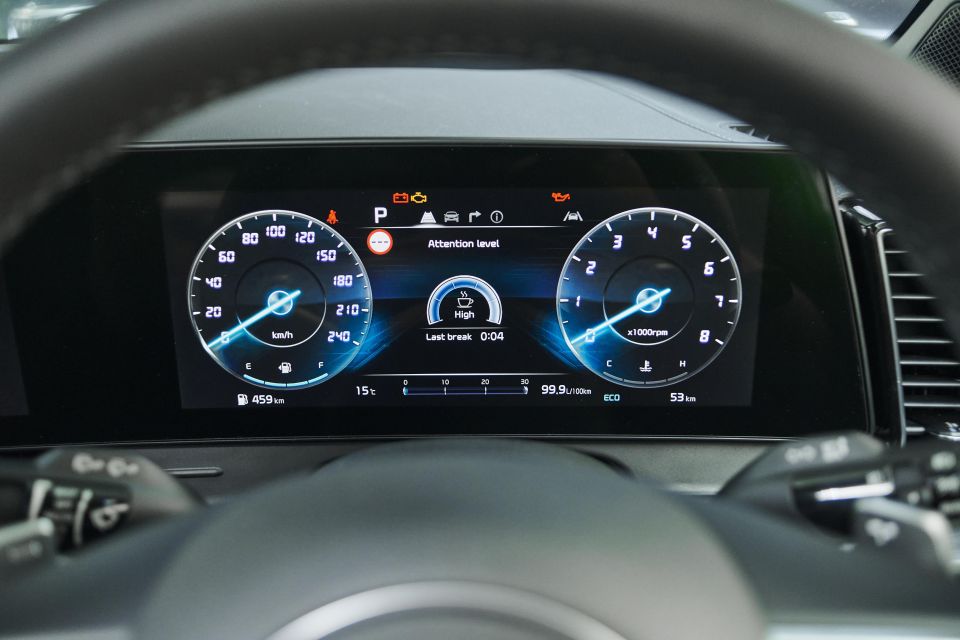
Meanwhile, all Sportage variants come standard with the following safety equipment:
The Sportage on paper fits a more fulsome safety suite, though its lack of independent crash rating counts against it for now.
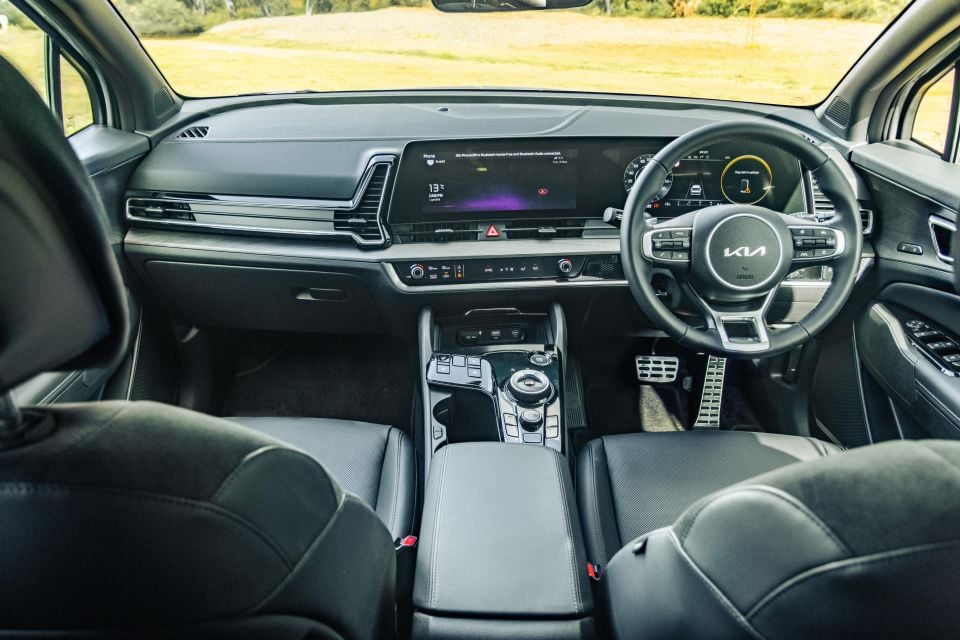
Kia Sportage:
These two rivals have very different approaches to interior design.
Hop in the Kia and you’re immediately greeted by dual 12.3-inch high-resolution displays (they’re curved too) and a pared back approach to physical buttons and switchgear. It’s very Mercedes-Benz.
Even the row of buttons beneath the infotainment display are touch-capacitive, though unlike many other vehicles going down this route they’ve been made to look and feel like normal infotainment and HVAC controls from previous Kia products.

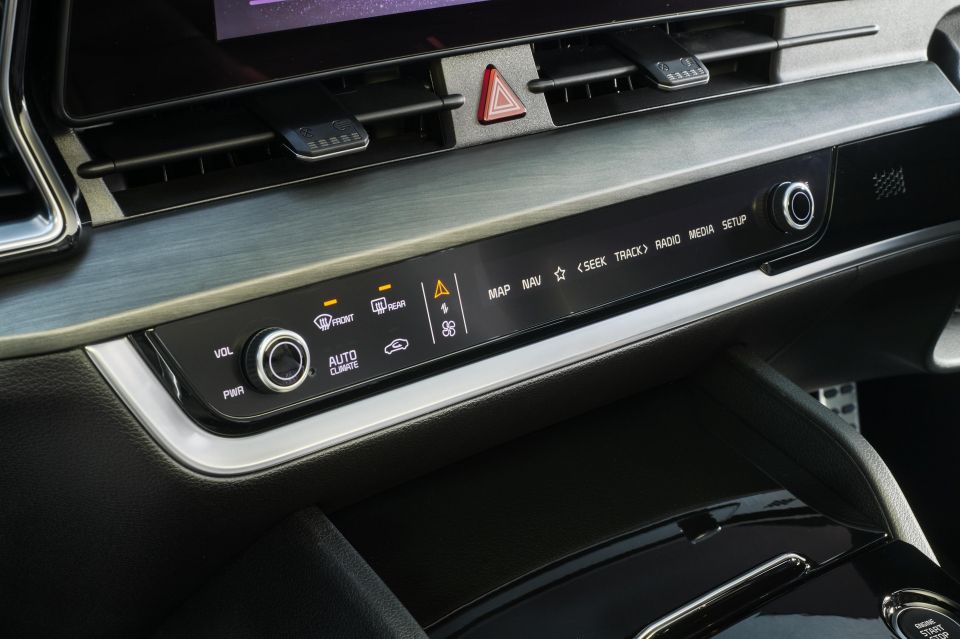
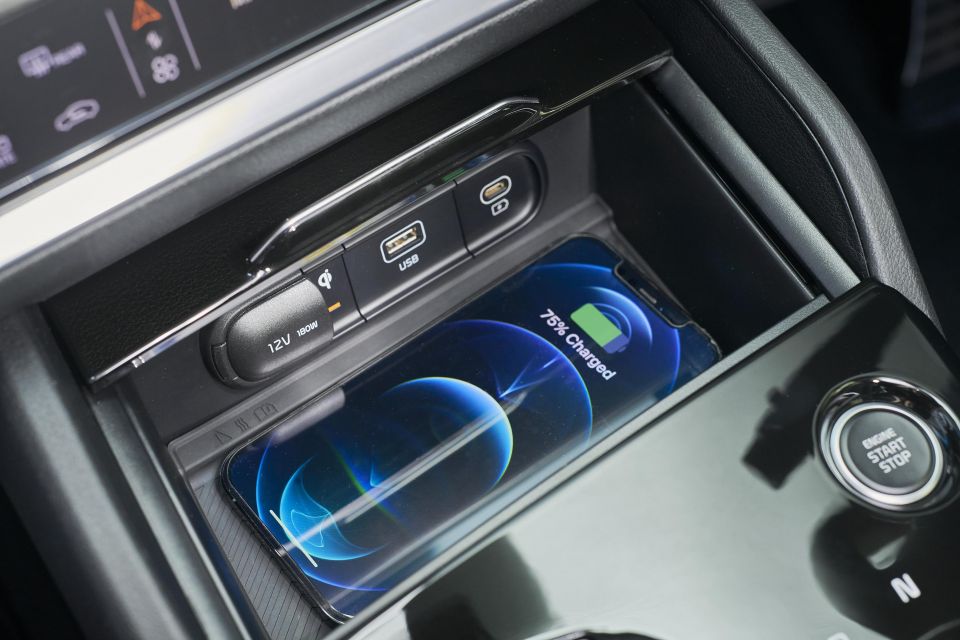
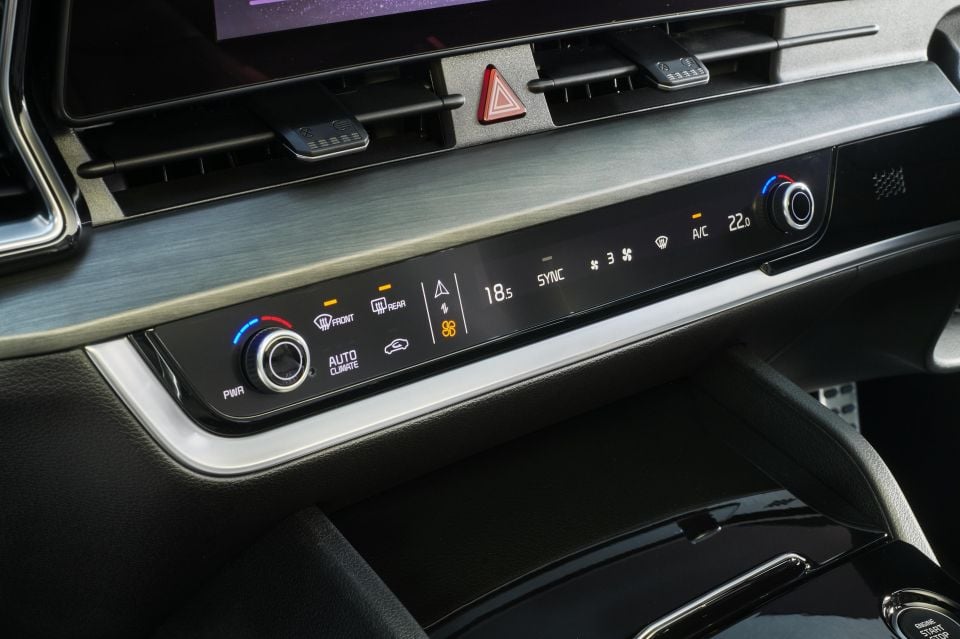
Ahead of the driver there’s a fully-digital instrument cluster, which is also where you get the Blind Spot View Monitor feed each time you indicate, and the shifter is a rotary dial. The cabin layout and design is very similar to the upcoming EV6 electric vehicle – Kia is really trying to give you ‘car of the future’ here.
Build quality and tactility is pretty good but not quite the class benchmark, with a mix of padded surfaces higher up in the cabin and harder plastics lower down.
There’s also a lot of gloss black trim which is a magnet for fingerprints and dust, while the fake wood inserts are a nice contrast but not necessarily believable.
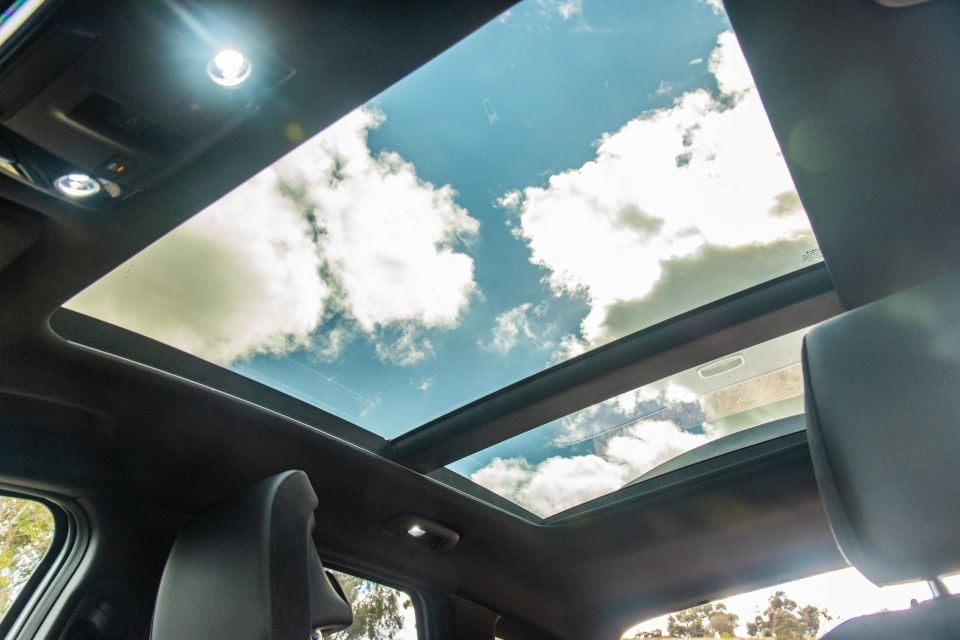
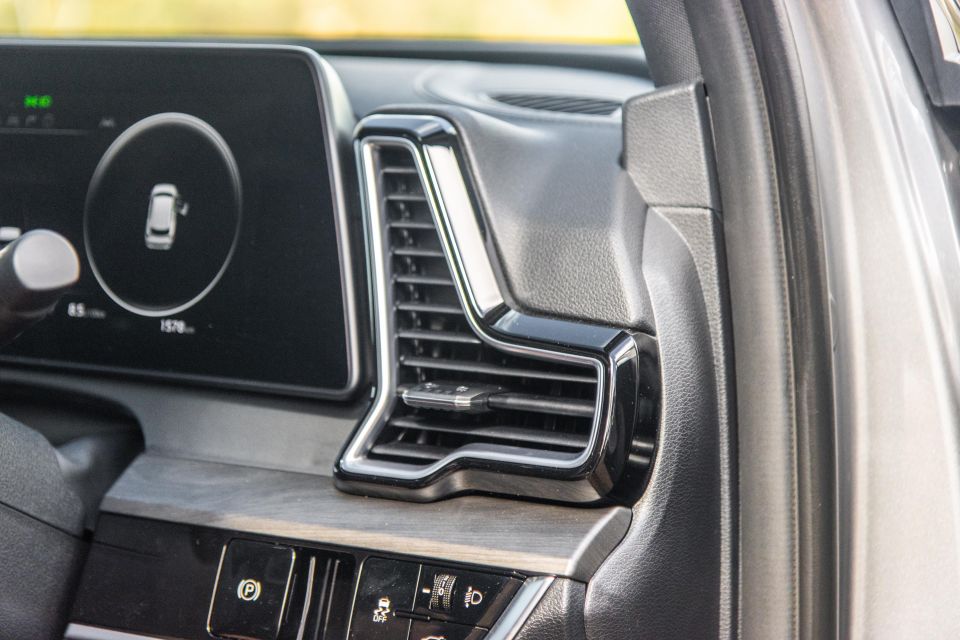
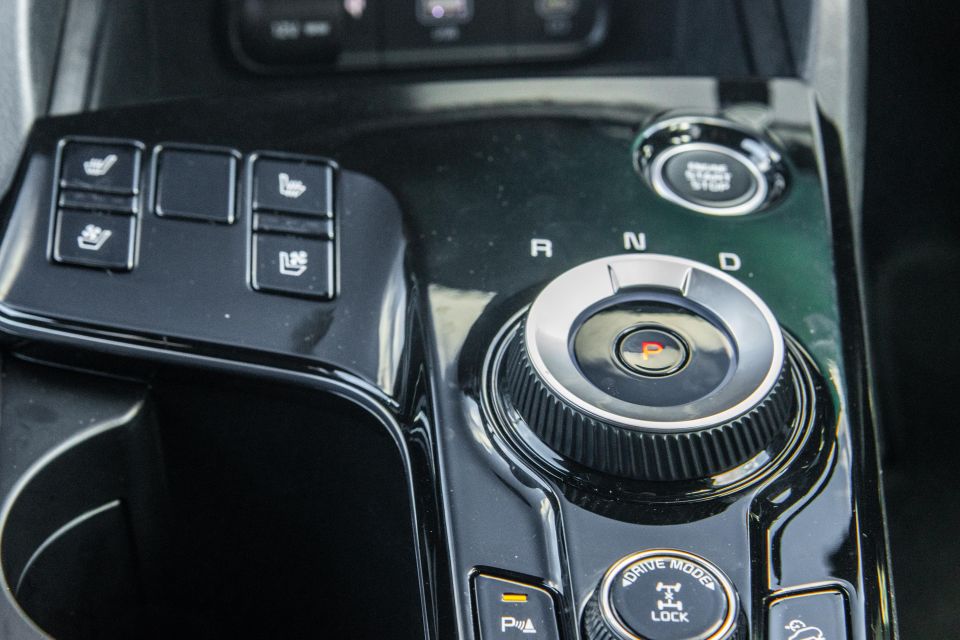
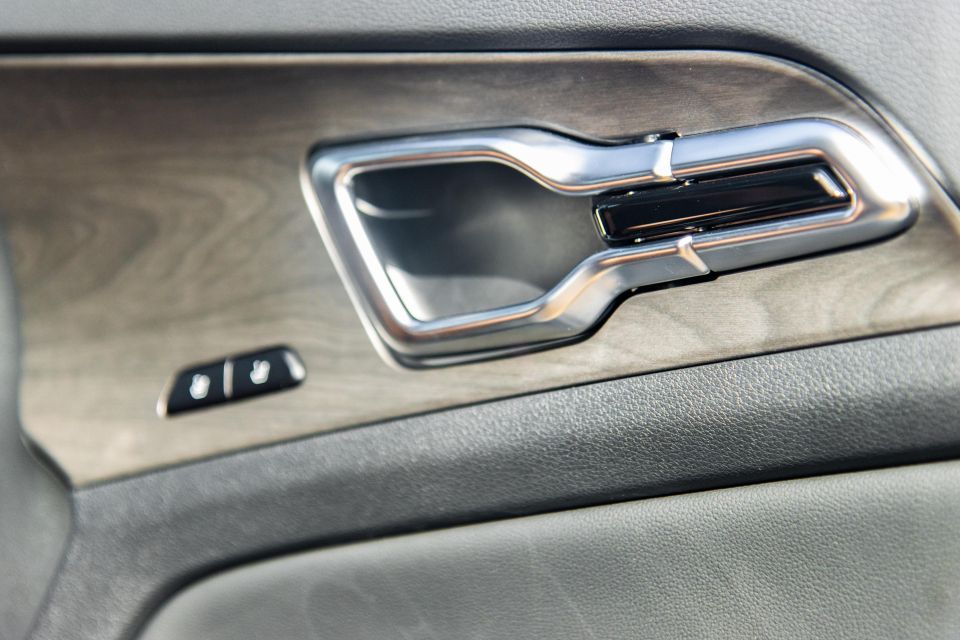
The front seats are electrically adjustable – eight-way with driver memory and lumbar – and quite comfy on the move, and there’s good storage including a cubby for your phone ahead of the shifter, a modular open cupholder area and a large bin under the front-centre armrest.
It certainly feels very modern and high end in terms of the appointments, though we’d love to see a lighter interior option so it isn’t just black-on-black-on-black.
Another thing to note is the cockpit feels like it wraps around you and gives a real impression of width. The high waistline and straight lines make the Sportage like quite a large car up front.
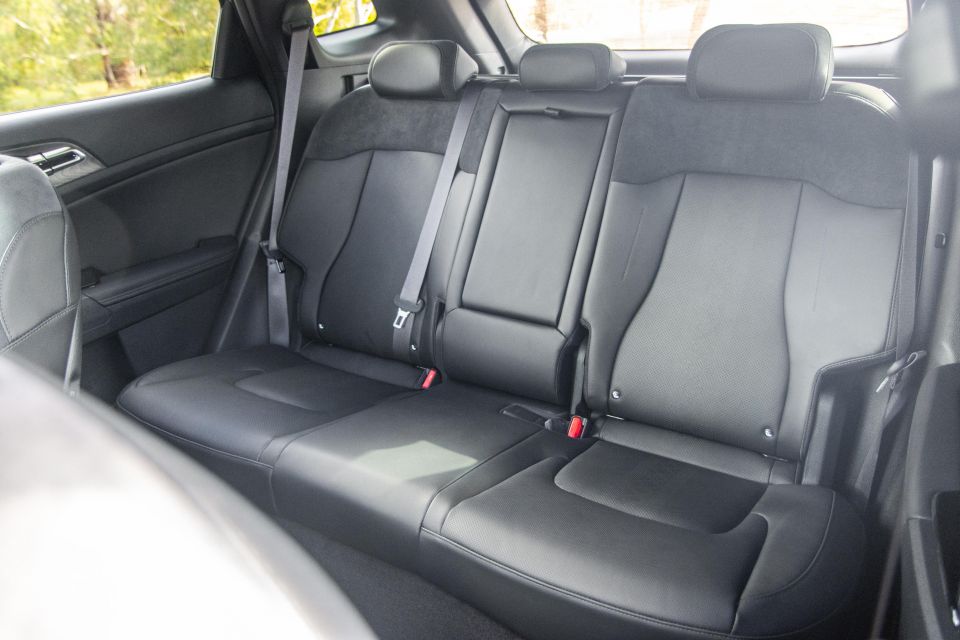
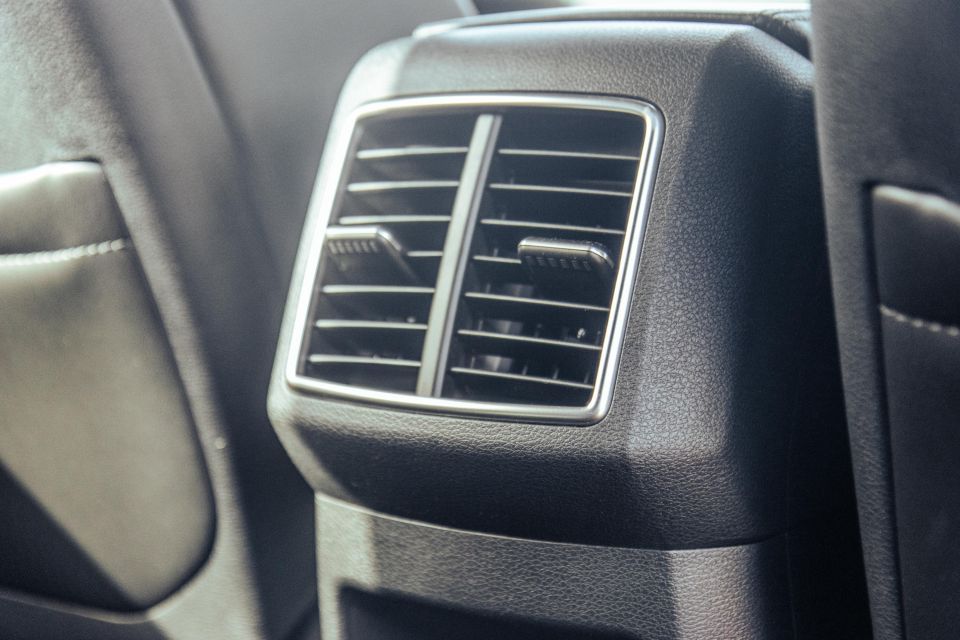
Move into the second row and there’s acres of room for lanky teenagers and full-size adults. Four will fit no problem as will three across at a pinch. The impression of width is carried over to the rear, where the Sportage feels like half a size class up on the Forester.
There are also ISOFIX points on the outboard positions, a fold-down centre armrest with cupholders, directional air vents, USB charge ports behind the front seats, and map pockets. No extra zone of climate control, though.
You can use the funny-shaped front headrests as coat hangers (by design), and there are also bottle holders in the doors.
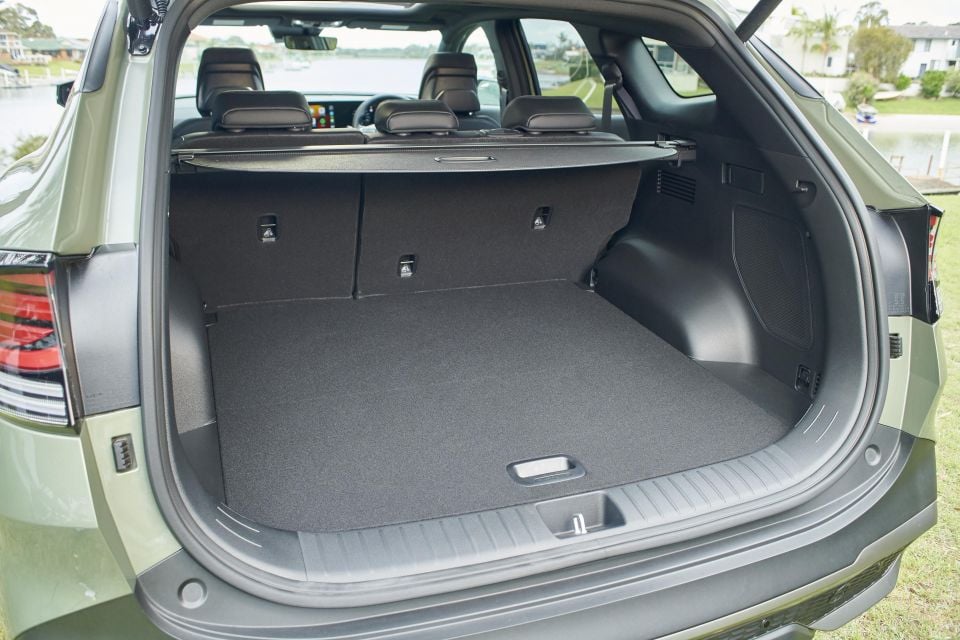
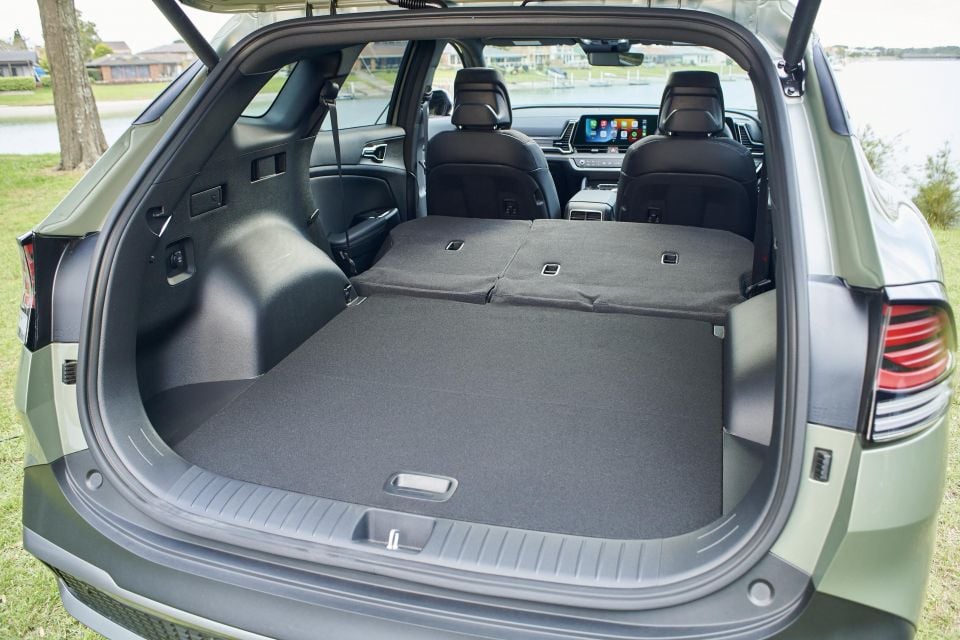
Further back again the Sportage offers a class-leading 543L (VDA) with the second row in place, expanding to a capacious 1829L (VDA) with them folded. That’s more than both the Tucson (539L) and CR-V (522L), and basically matches the Toyota RAV4 (542L). It’s also about 80L more than the previous generation in five-seat layout.
There’s remote rear seat releases in SX models and up, and all versions of the Sportage pack a full-size alloy spare wheel – something that’s becoming increasingly rare these days.
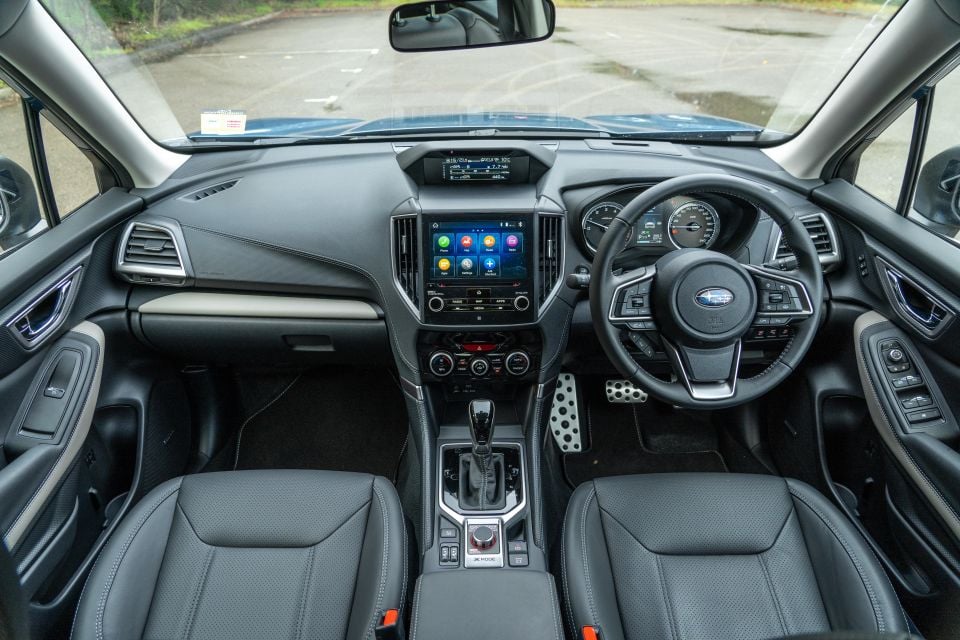
Subaru Forester:
There are lots of screens, lots of buttons, and solid materials. The seats are trimmed in what feels like high-quality leather, and neatly balance pillowy softness with support.
With heating and electric adjustment, you couldn’t ask for much more, though the Sportage’s front-seat ventilation is something the Subaru cannot match.
Ahead of the driver is a chunky, leather-trimmed steering wheel featuring an eye-popping amount of buttons. There are 17 on the wheel alone, and that doesn’t include the plastic paddle shifters. Bundle in controls for the active safety down by the driver’s right knee, as well as a trip reset button behind the wheel, and there’s quite a bit going on.

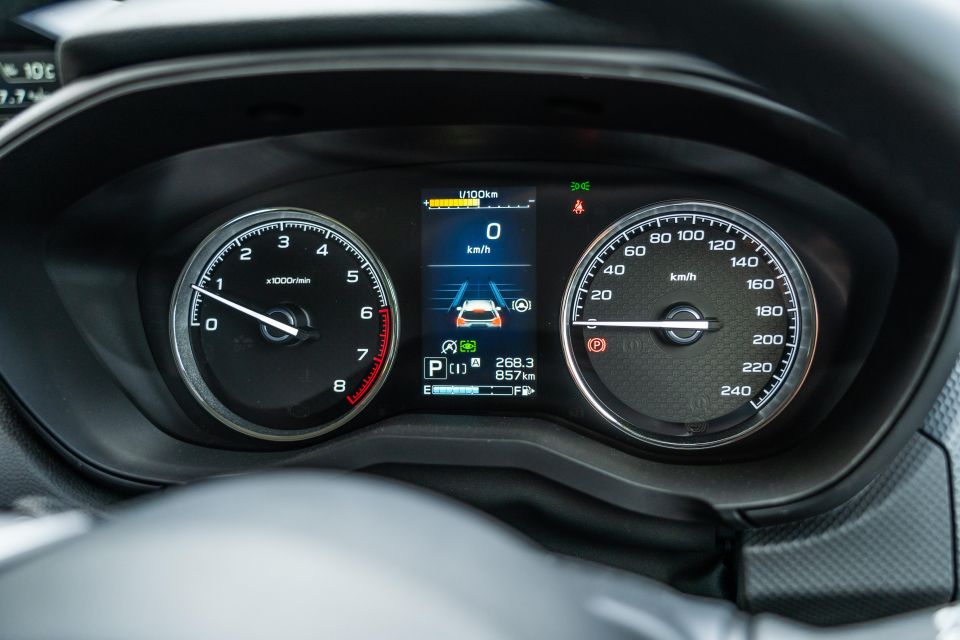
The clear analogue dials flank a 4.2-inch trip computer with a huge range of layouts, including a digital speedo. Kia has made the Sportage feel a lot more futuristic with it’s digital driver’s display, though traditionalists will likely prefer Subaru’s approach.
It partners a horizontal display atop the dashboard, capable of showing fuel economy, media information, a breakdown of your active safety systems, or details about the all-wheel drive system.
They’re both useful displays, but they have their quirks. You lose your dash-top display in favour of an EyeSight graphic when cruise control in engaged, for example, and unless you’re very particular with how you set the three screens up it’s easy to just have the same information in three different places.
Compared to the Kia, the Forester doesn’t feel quite as high-tech but with the exception of the dash-top display it’s very logically laid out and pretty easy to use.

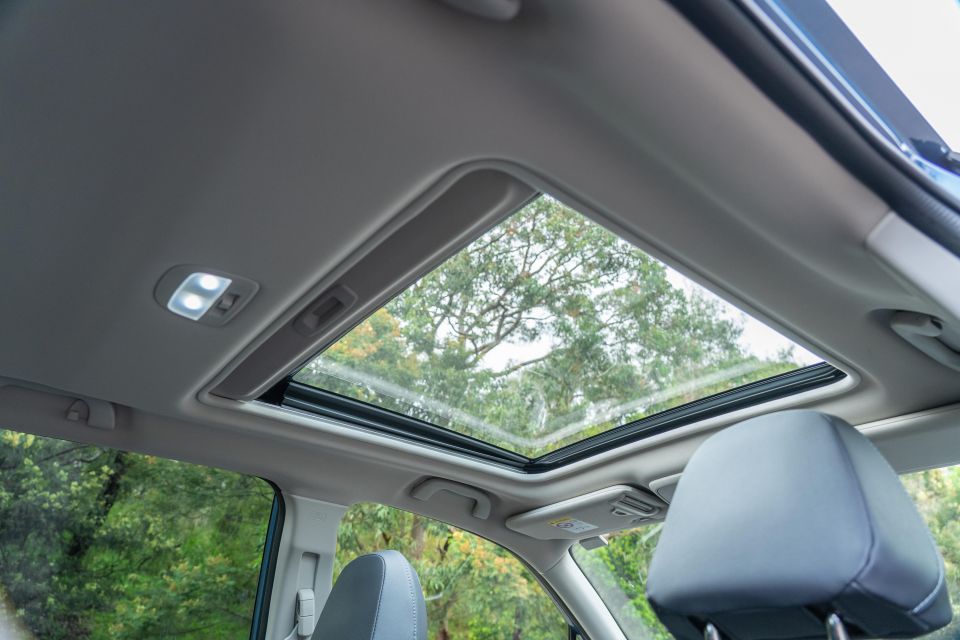

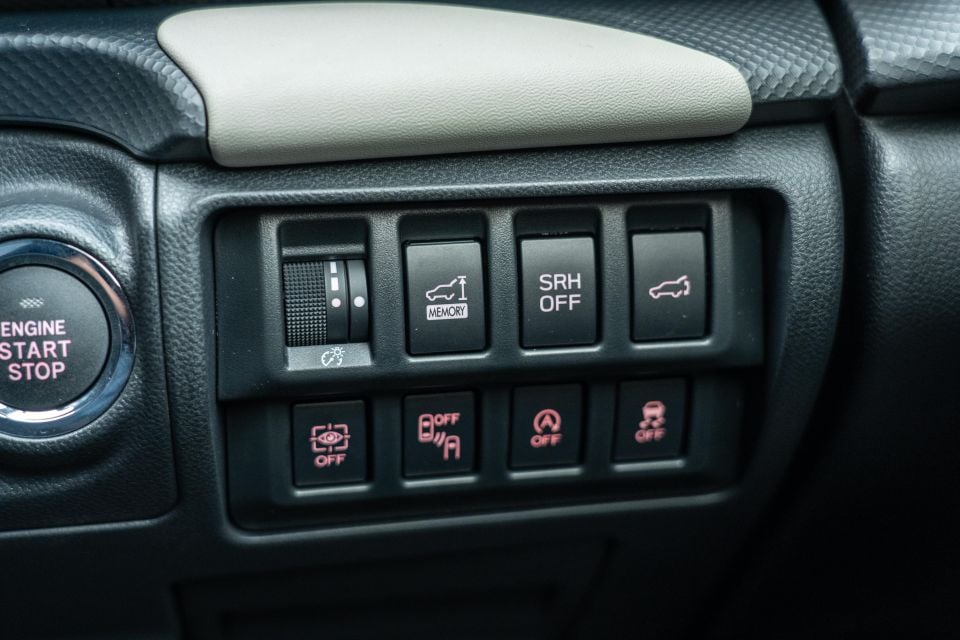
Where expert car reviews meet expert car buying – CarExpert gives you trusted advice, personalised service and real savings on your next new car.
Like the larger Outback, the Forester has a facial recognition system. It can remember up to five drivers, and automatically moves the seats and configures the infotainment system when it works out who’s behind the wheel. It also chimes when you take your eyes off the road, which sounds good in theory but tends to jump at shadows in practice.
Storage is pretty good up front. There’s a wallet-sized space below the dashboard, two cupholders, a shelf for keys, and a deep bin beneath the central armrest. You also get two USB-A ports up front.
You’ll find the Subaru feels tall and skinny where the Kia feels low and wide. Whether one or the other is ‘better’ is down to your personal preference, but for me the Sportage’s setup feels more upmarket and gives the impression that you’ve bought a bigger, more substantial vehicle.
The rear seats have been a strong point since this Forester generation’s launch and that hasn’t changed. With a tall, boxy roofline and massive windows, it feels much brighter back there than in some of its more style-focused rivals.
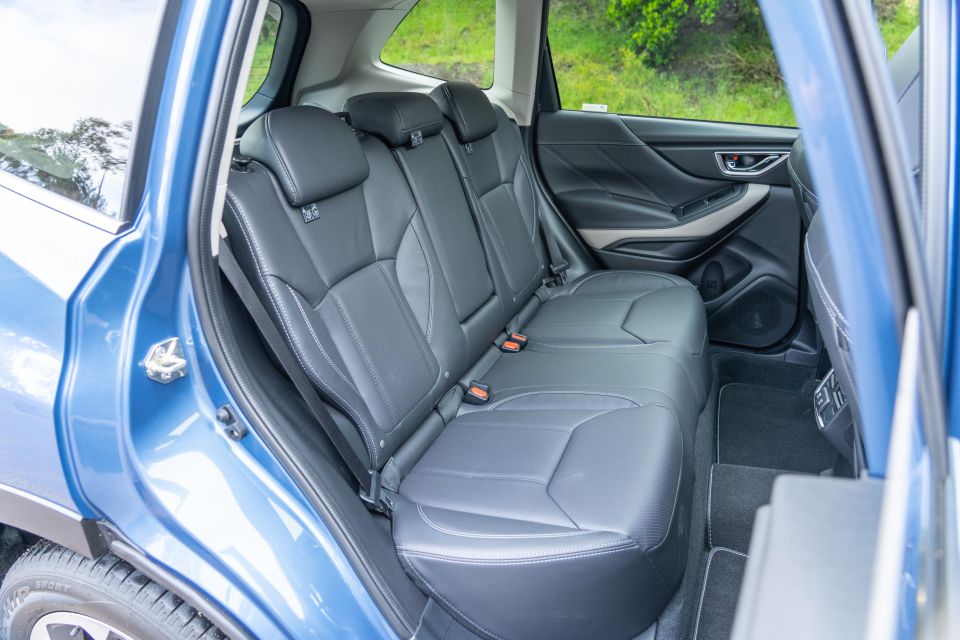
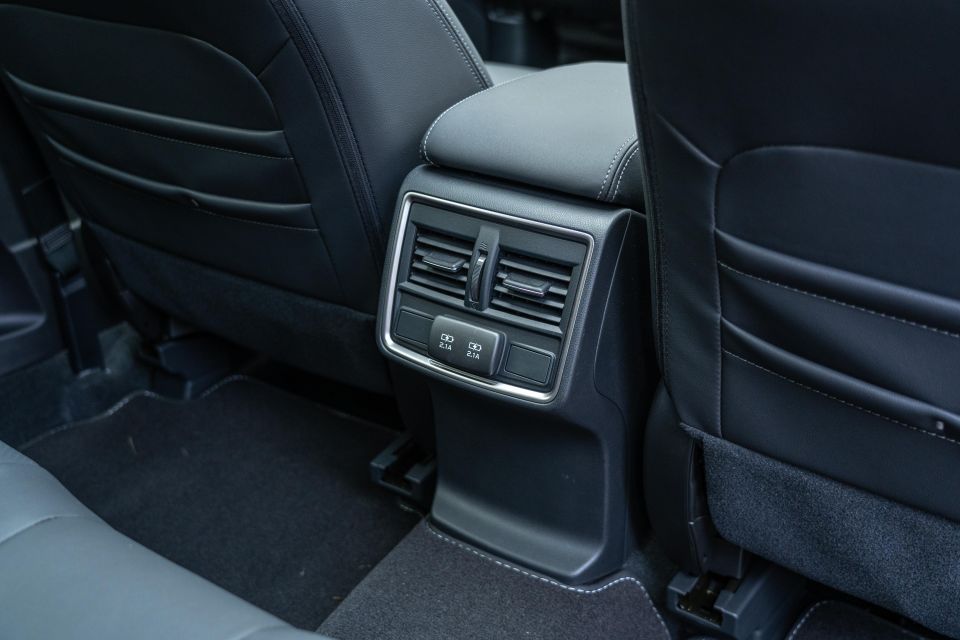
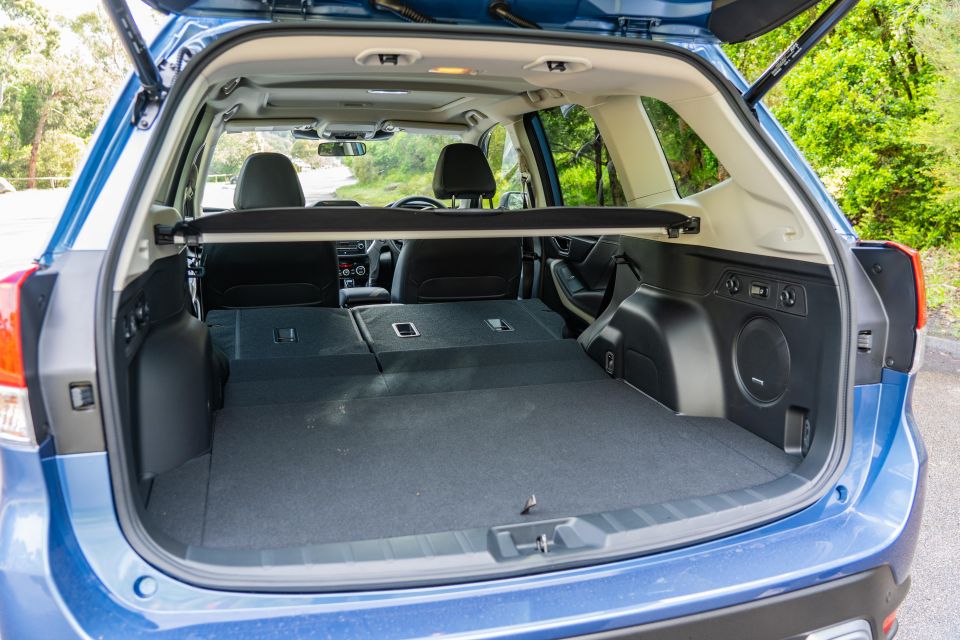
Even with a panoramic sunroof fitted the Forester has enough headroom for tall teens, and legroom is good behind taller adults. The bench itself is plush, and is wide enough for three people to sit across without too much trouble.
You get air vents, two USB ports, a fold-down armrest, and two-tiered pockets behind the front seats, along with door pockets that comfortably swallow a water bottle.
Boot space is 498L with the second row in place, expanding to 1740L with the rear seats folded flat, which is less than the Kia in both measurements. The low, flat boot floor makes it easy to load bulky or cumbersome items back there, and the boxy body makes fitting big bikes easy.
There’s a full-size spare wheel under the floor, rather than a space-saver or puncture repair kit.
| Kia Sportage | Subaru Forester | |
|---|---|---|
| Length | 4660mm | 4640mm |
| Width | 1865mm | 1815mm |
| Height | 1660mm | 1730mm |
| Wheelbase | 2755mm | 2670mm |
| Clearance | 181mm | 220mm |
| Boot space | 543L | 498L |
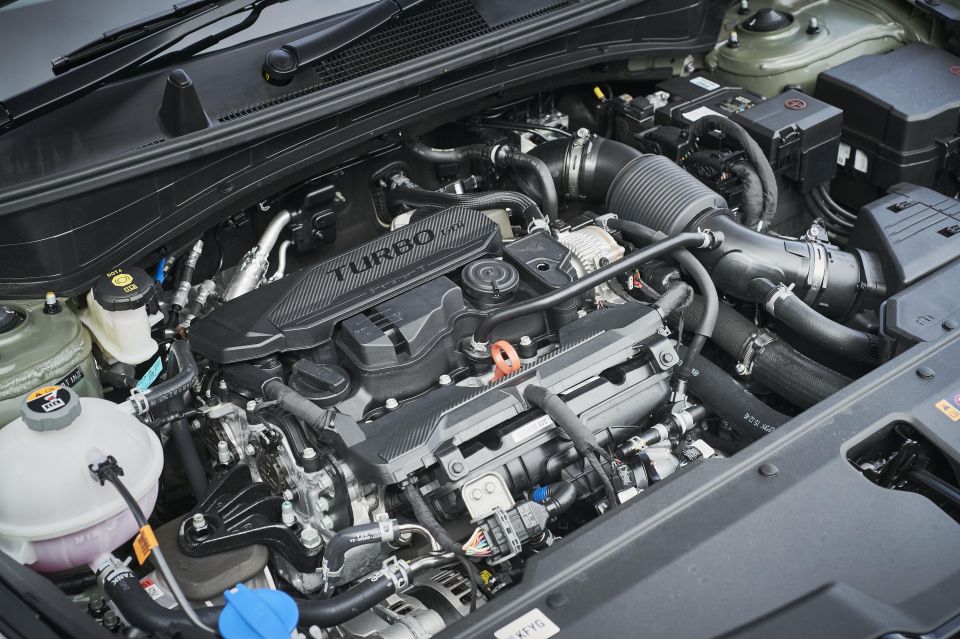
Like the very different approaches to design, these two rivals have very different powertrains.
The Sportage is powered by a 1.6-litre turbocharged four-cylinder petrol engine developing 132kW (5500rpm) and 265Nm (1500-4500rpm), sent to an on-demand all-wheel drive system via a seven-speed dual-clutch automatic transmission.
Meanwhile, the Forester utilises a 2.5-litre naturally-aspirated four-cylinder ‘Boxer’ petrol engine outputting 136kW (5800rpm) and 239Nm (4400rpm), driving all four wheels permanently via a CVT automatic which has simulated ‘steps’ to feel more like a conventional automatic.
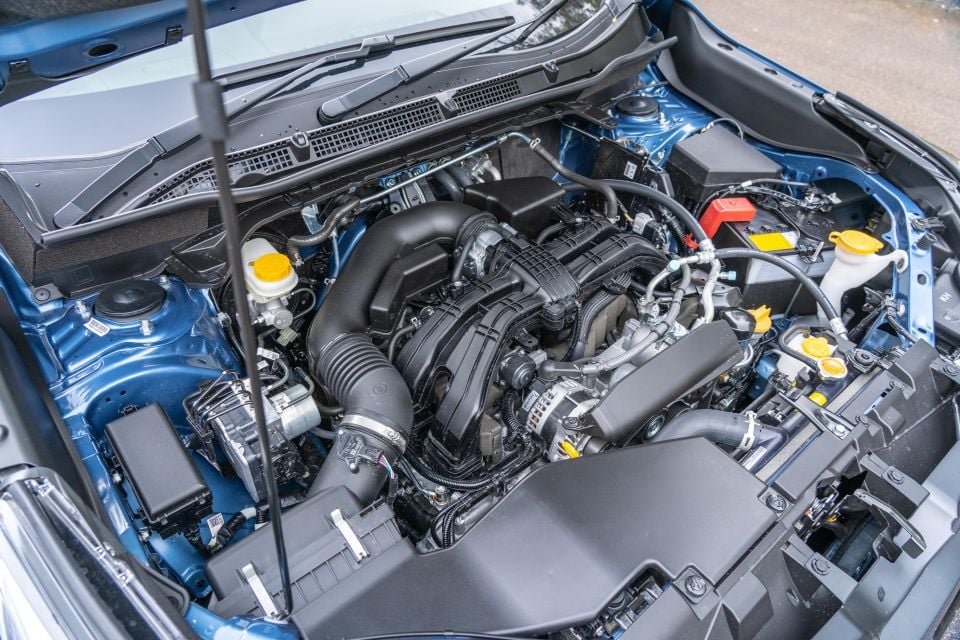
Key notes here are that the Sportage develops peak torque just off idle for more effortless low-down response, while the different transmission types in each vehicle greatly impact driving feel – we’ll get to that next.
Both engines can run on cheaper 91 RON unleaded fuel, though only the Subaru features idle stop/start.
Speaking of fuel, the Kia claims combined consumption of 7.2L/100km while the Subie quotes 7.4L/100km.
| Kia Sportage | Subaru Forester | |
|---|---|---|
| Fuel type | 91 RON petrol | 91 RON petrol |
| Displacement | 1.6-litre | 2.5-litre |
| Induction | Turbo | Naturally aspirated |
| Power | 132kW @ 5500rpm | 136kW @ 5800rpm |
| Torque | 265Nm @ 1500-4500rpm | 239Nm @ 4400rpm |
| Transmission | 7-speed DCT | CVT |
| Driven wheels | AWD | AWD |
| Fuel economy | 7.2L/100Km | 7.4L/100Km |
| Fuel tank | 54 litres | 63 litres |
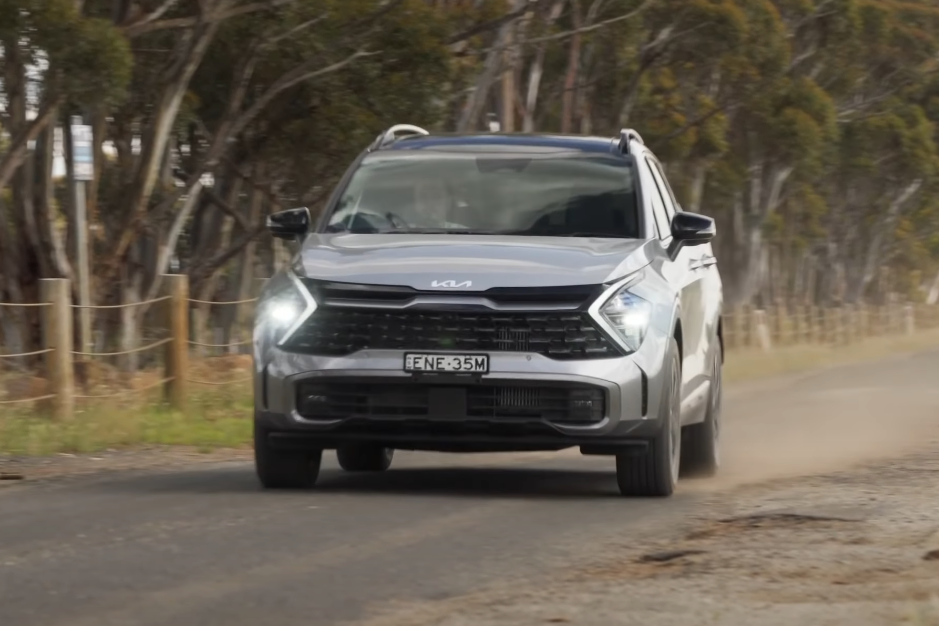
Those very different powertrains translate to quite different experiences on the road.
I drove these SUVs back-to-back in Melbourne’s far east, in and around where esteemed leader Paul Maric shoots some of his CarExpert video reviews.
Out near Narre Warren and Emerald, there’s a mix of 100km/h country B-roads mixed in with slower residential areas, and quite a few different road surfaces. It’s a great place to test performance, ride, handling and refinement.
First up was the Sportage, which benefits from a localised suspension tune – as has been the Kia way for years.

As I noted in my single-car launch review, the Sportage is very impressive when it comes to ride comfort and refinement.
It’s not the sharpest handling SUV in the segment, but offers predictable and secure handling befitting a larger more substantial vehicle, and the ride is excellent even on the GT-Line’s 19-inch alloy wheels.
The Sportage irons out the lumps and bumps of country roads with aplomb, and does so with such excellent sound insulation for the class that it even rivals many luxury-branded models in this area.
At all times the Kia feels sure-footed and planted, with road-holding that makes it feel more like a Sorento than a Seltos – courtesy of the new chassis which is a shrunken version of that in the Sportage’s larger stablemate.
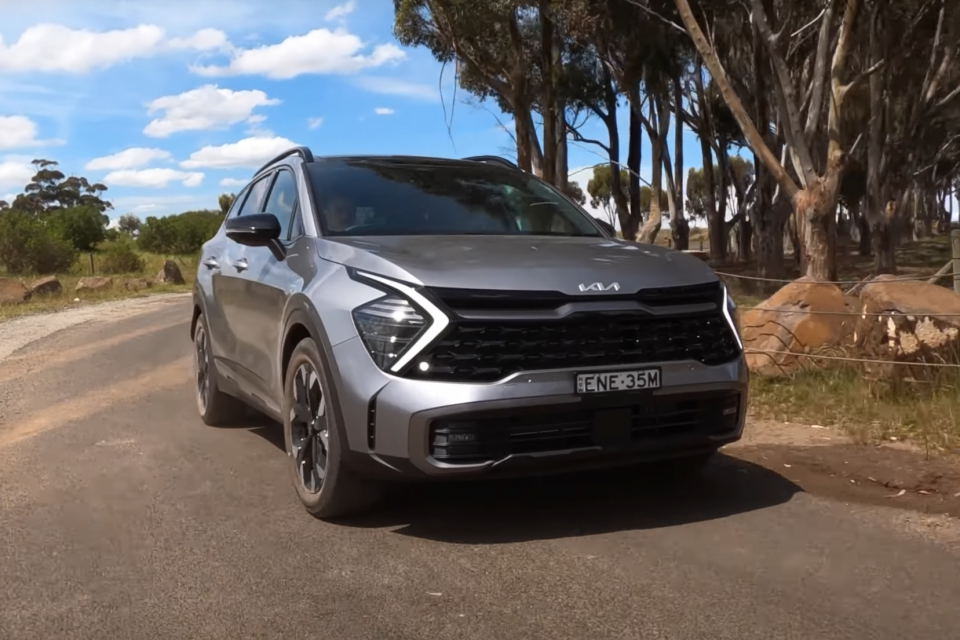
Performance from the 1.6-litre turbo petrol teamed with seven-speed DCT and all-wheel drive is decent without being stellar. There’s good low-down shove for pretty effortless acceleration but demand too much of it and it can be a little slow to react and there’s a gruff engine note under load that doesn’t really suit the Sportage’s premium aspirations.
The DCT is also not the best performer at city speeds, with slight hesitation off the line and the occasional clumsy shift from first into second. If you’re easy on the throttle it’s fine but sometimes you really feel the gap in acceleration and you may need to adjust your driving style to get the best of of the drivetrain.
Kia’s fulsome driver assistance suite allows for semi autonomous highway driving, and features like active lane centring and adaptive cruise control with stop/go take the load off during busy and/or long commutes. The Blind Spot View Monitor is also a handy point of difference though night-time visibility isn’t great.
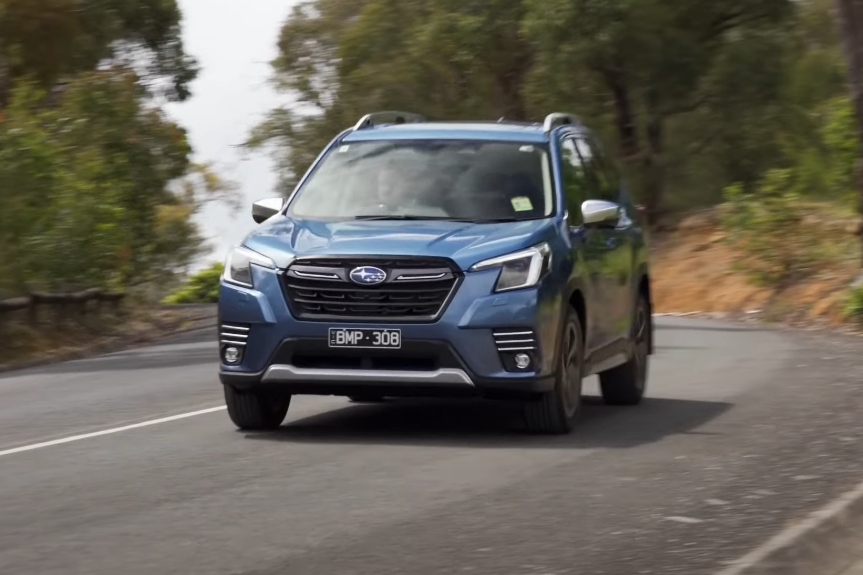
The Subaru Forester feels entirely different to the Kia.
Immediately after setting off I noticed the Subaru feels like an enlarged small car rather than a shrunken large car. The atmo petrol and CVT combo also make it a very different beast, and the on-road feel as well as the NVH are key differences here.
Where the Kia can feel sluggish or lazy off the line, the Subaru is very responsive to initial throttle input, and that’s even with fuel-saving idle stop/start tech fitted (which the Kia doesn’t have).
CVTs are best paired with engines with not a whole lot of grunt, and the Forester’s 2.5-litre petrol gets up and going with decent enough pace, but can’t match the Sportage’s turbocharged low-down shove.

Give it too much boot and the revs just flare and the rumbly engine note dominates the ambience, drowning out the road noise over coarse-chip surfaces temporarily. The Forester isn’t as refined as the Sportage in most respects.
The Subaru’s ride is comfortable, the handling secure and accurate, though it didn’t give me that same sporty AWD feeling like Subarus of old. In the corners you’ll get a bit of lean and the Forester’s tall, boxy proportions can make it feel a little top-heavy.
While mostly on par with the Sportage in terms of active safety features, at least on paper, the array of beeps and bongs from Subaru’s EyeSight features feel less intuitive and can just get plain annoying.
For example if it thinks you’re not looking at the road ahead enough it’ll start chiming, the lane-keep assist bongs at you constantly and vibrates the wheel. The new active lane centring feature is handy, and when combined with adaptive cruise control takes the strain out of longer highway stints, but it’s no better than Kia’s system.
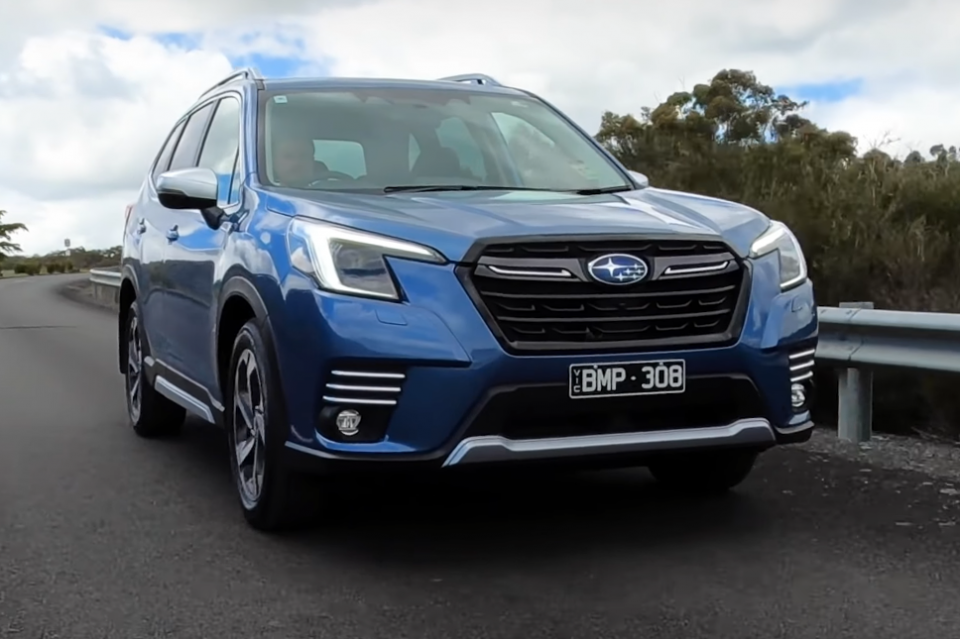
Annoyingly, activating cruise control takes up half of the driver’s display in the instrument cluster. Some of the tech just needs another layer of polish.
On area where the Forester always shines is moderate off-roading. There’s no low range or anything like that, but the always-on AWD and decent ground clearance means it’ll tackle the odd trail or two without fuss.
Overall the Forester just felt like a less sophisticated vehicle on the road. The powertrain is a little noisy and can get droney under consistent load, road and wind noise just aren’t as well suppressed, and the ride isn’t as well sorted as Kia’s local tune.
The driver tech also needs some more refinement, and while easy to live with and drive in most conditions, the Forester just lacks the big-car feel of the Kia, especially on the open road.
It really goes to show how good the Sportage’s new platform is, because the Forester in isolation is a pretty solid mid-size SUV.
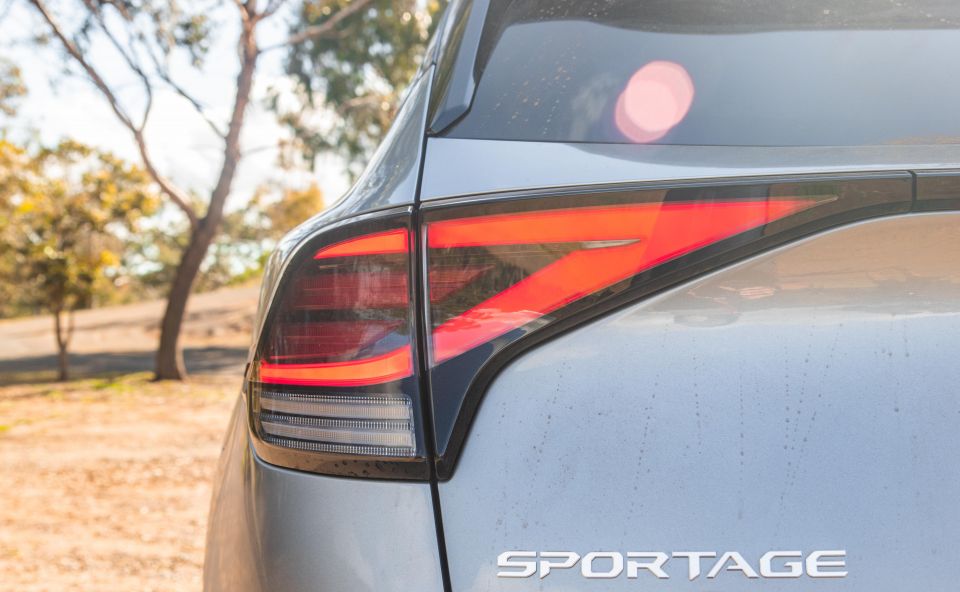
Kia covers the Sportage with a seven-year, unlimited-kilometre warranty with roadside assistance and capped-price servicing for the same period.
Indicative service pricing for the Sportage 1.6T over the first seven years of ownership is $323, $573, $422, $783, $364, $851, $672 – totalling $3988 over the life of the program.
Maintenance in the Kia is required every 12 months or 10,000km for the turbo petrol – naturally-aspirated petrol and turbo-diesel versions extend the mileage interval to 15,000 kilometres.

The Forester, meanwhile, is covered for five years and unlimited kilometres, with service plans available spanning three or five years.
For non-hybrid Forester models with the 2.5-litre engine, these cost $1269.15 and $2413.63 respectively.
In terms of fuel consumption the Sportage was in the eights over our mixed drive loop favouring country roads and highways, while the Forester was slightly thriftier sitting in the high sevens.
Both vehicles can run on cheaper 91 RON regular unleaded.
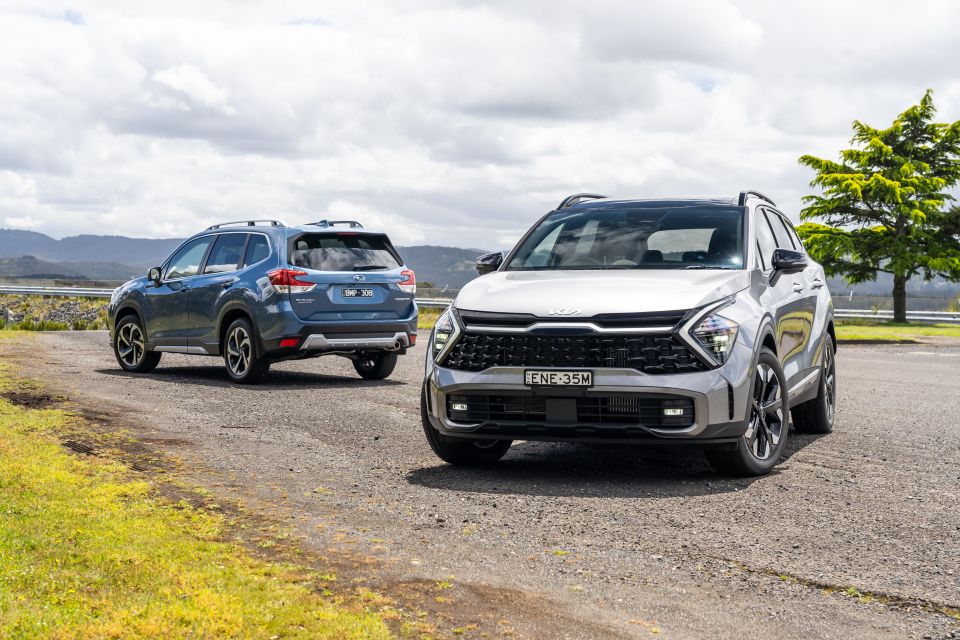
While both of these SUVs are fresh releases, only one feels like a genuinely new product.
The facelifted Forester doesn’t change much. It adds a couple of extra features and claims to even out the ride a bit (not that I noticed), and retains the current generation’s pillars of space, comfort, and all-wheel drive security.
While it’s still a well-rounded package, particularly against some of the older competitors in the class, it is comfortably defeated in this test by the new Kia Sportage.
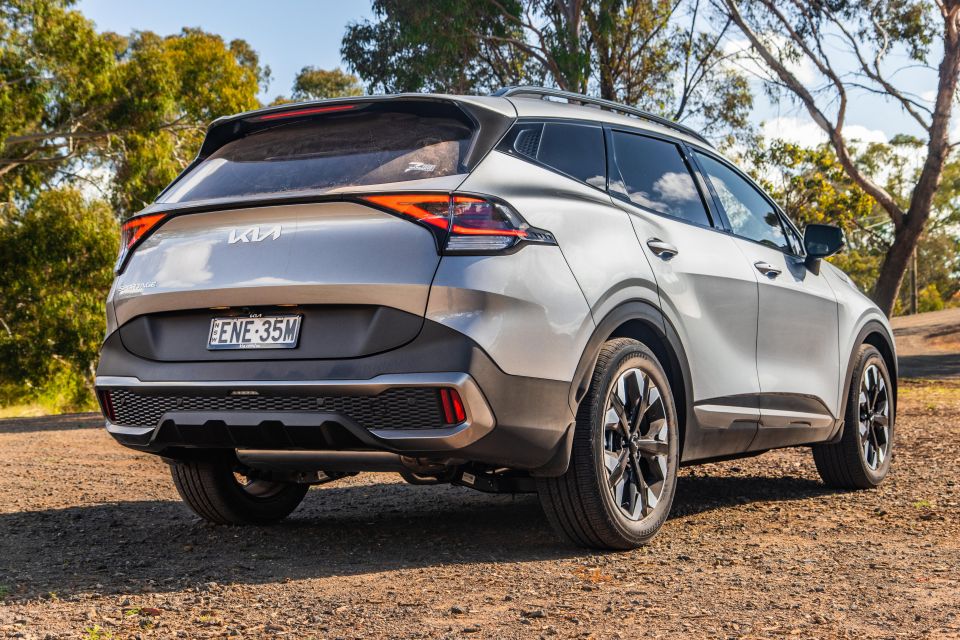
In GT-Line guise the Kia brings design, equipment and refinement levels comparable to an entry-level premium product, and is priced sharply enough in an increasingly expensive market to still represent good value.
The design may polarise, but the Sportage gives you more car for the money, and is better in just about every respect. It just feels like a more well-rounded package with an extra layer of polish to make the Subie feel a little old-hat.
With that said, both vehicles here are good cars, offering great space for families with features lists as long as your arm. They’re also both decked out with safety technology – the Subaru’s five-star rating is a point of difference for now – and are alright on fuel, but not RAV4 Hybrid thrifty.
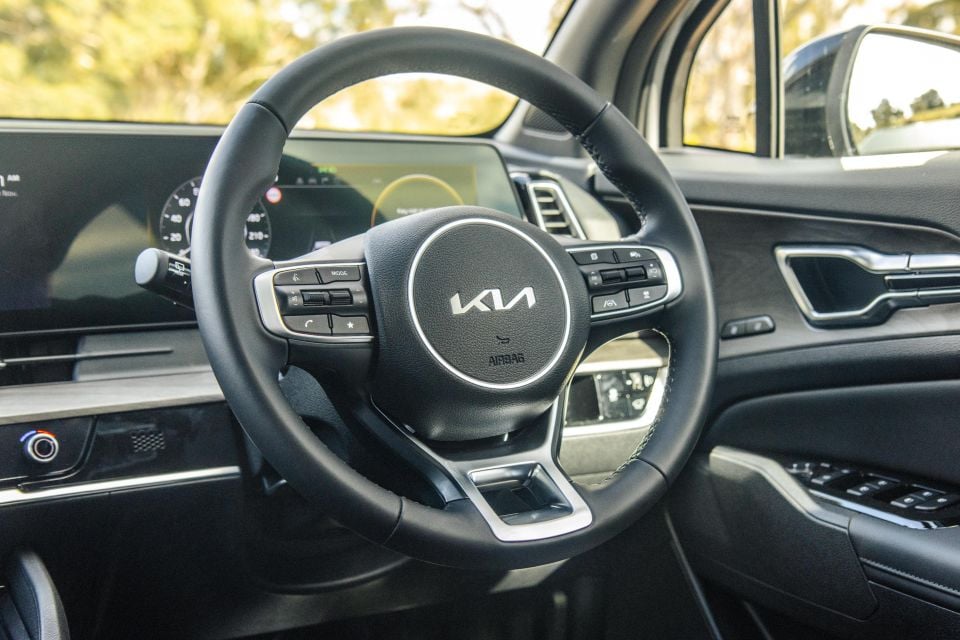
Click the images for the full gallery
MORE: Everything Kia Sportage MORE: Everything Subaru Forester
Share your thoughts with us in the comments below!
James Wong is an automotive journalist and former PR consultant, recognised among Australia’s most prolific motoring writers.
Share your thoughts and write a review of a car you own and get featured on CarExpert.


Damion Smy
2 Hours Ago


Damion Smy
4 Hours Ago


Damion Smy
5 Hours Ago


Matt Robinson
8 Hours Ago


Damion Smy
8 Hours Ago


Damion Smy
22 Hours Ago